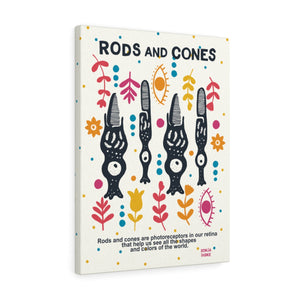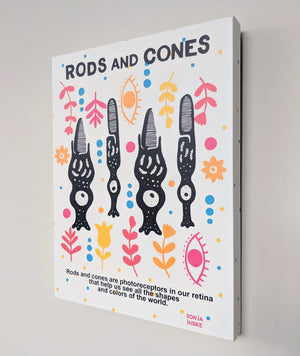Your Cart is Empty



Seeing with Rods and Cones - Illustrated by Sonja Inske
$49.50 - $63.50
Create a welcoming waiting room, a colorful office or elevate the mood in your laboratory with science art that is both beautiful and informative.
Do you know why it's difficult to see color at night? Or why color blindness takes many forms? How do some animals have such great night vision?
The 100 million rods in the human eye are responsible for low-light vision but cannot sense different colors. Animals with excellent night vision have many more rods but may have less cones, leading to poorer daylight color vision (dogs, for example).
The 6 million cones in the human eye let you see colors. Blue, green and red cones each respond best to different wavelengths of light and an imbalance in their populations can cause color blindness.
Remind yourself, your colleagues or your visitors of the complexities of the human eye with this colorful illustration by science artist Sonja Inske.
*Sales of this item support the independent Science Artist Sonja Inske
Details:
Made in USA. Printed on museum-quality textured canvas with no glare or sheen. Wrapped around a 1.25” thick frame to give a visual pop on a flat wall.
Shipped ready to hang | Scratch-resistant UV coating to prevent fading | Individually printed with attention to detail | Arrives in 1-3 weeks in the USA, 2-5 weeks internationally

















































